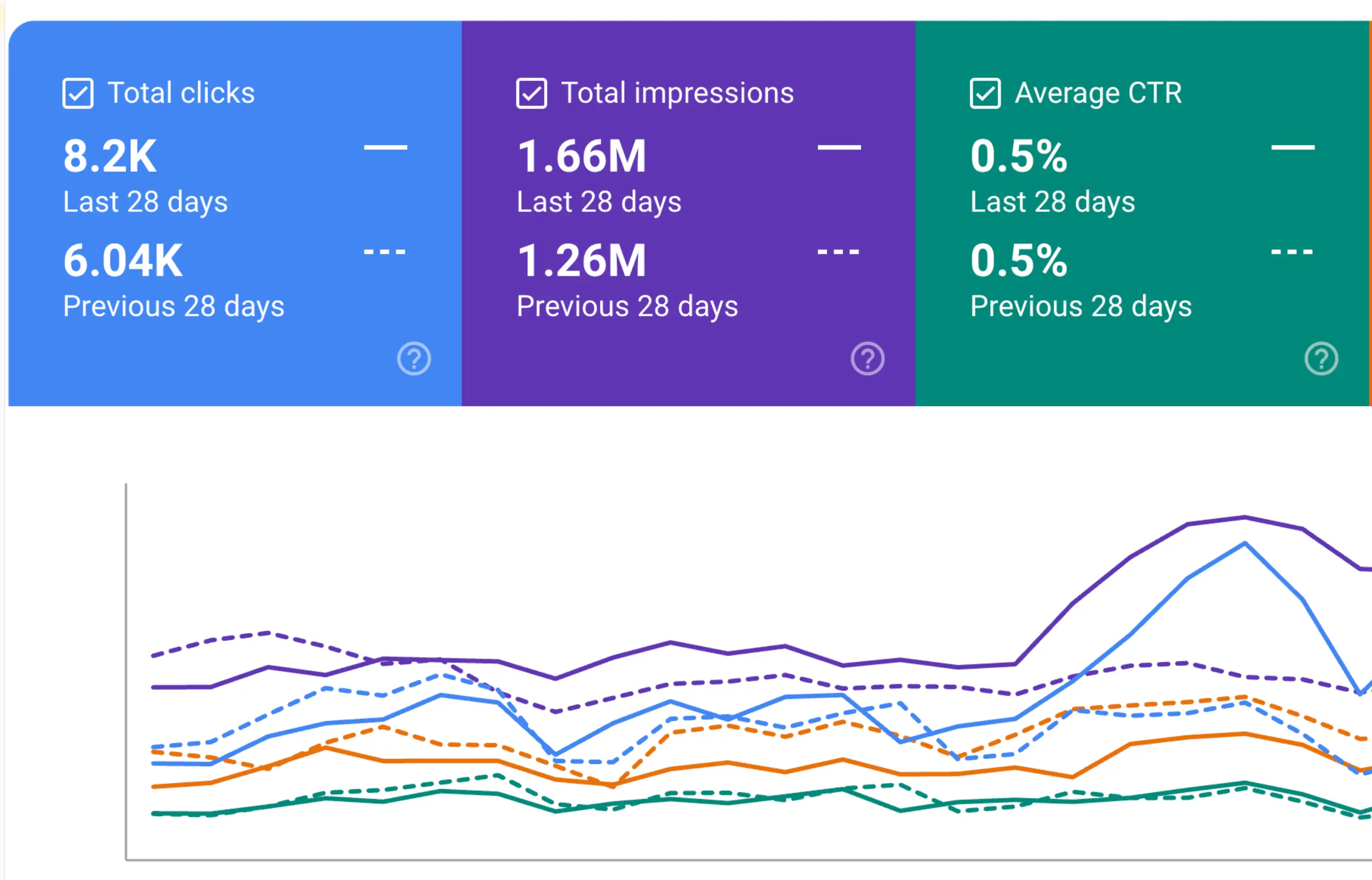How We SEO'd Community Content for Better Rankings and Traffic

The best thing about building an online community is that it attracts traffic organically with user-generated content. Imagine having your community automatically attracting new users who join, create content and that content pulls more traffic.
In the past 20 years, I’ve built several large communities from scratch. Each community was built on the basic principles of SEO and the results were astounding.
CrazyEngineers community - a community of engineers I built in 2005 became Asia’s largest community of engineers in about 5 years simply using search-engine optimised content.
The second one, a niche community of video developers went from 0 users/month → 15,000 users/month in 9 months because of a simple hack we implemented.
If you are building an online community for your niche or your brand - you can build an organically growing community.
TL;DR: Overview of SEO Growth Hacks for Community
If you are familiar with SEO, the basics remain unchanged -
Start with long-tail, 0 search volume keywords
Serve user intent quickly
Build internal links for better discoverability
Employ XML sitemaps to keep search engines informed
Use structured data to optimise your content.
That’s more than what you need to build a high-growth, organic community. If the above list looks too complicated to you, don’t worry.
Long-tail, Zero Search Volume Keywords
If you are building your community from scratch or already have an active community - you should still work on finding out long-tail, zero volume keywords.
“Keywords” are the actual words people type into search engines like Google, Bing or ChatGPT and Perplexity. For example, “The Best Community Platform for Enterprise”. In this phrase, the keywords are ‘best’, ‘community platform’, and ‘enterprise’.
Search engines put importance on these keywords when finding out the relevant pages in their index.
What are long-tail keywords for your community?
Let’s understand this with an example. Consider following keywords -
Community Platform (short-tail keyword)
The Best Community Platform for D2C Operators (long-tail keyword)
Long-tail keywords are the holy-grail of building community traffic. Your online community allows you to target several of these long-tail keywords. So you can have variations like:
The best community platform for solo SaaS founders
The best community app for traders in Canada
You can now craft your content to serve this highly specific query and help search engines prioritize your content over other, general content pieces.
Importance of Zero Search Volume Keywords
The most popular way to find out keyword search volume is tools like ‘Ahrefs’ or ‘Semrush’. These tools keep track of user searches online and build an estimated number for each of the query.
Most of the content builders focus on low search volume keywords because they are easier to rank.
If you are building a new community, you should focus on zero search volume keywords. These would be highly specific, bottom of the funnel queries.
Why? Because the competition is practically zero - and your content can rank faster than others, even with lower domain authority and backlink profile.
In addition, it helps you build your topical authority on the topic by targeting search queries no other webpage is paying attention to.
Serve User Intent Quickly
The key to convincing Google and other search engines to send you traffic is to serve the user intent quickly. Usually, people have the following search intent:
Informational: Casually looking for answers to their questions
Example: How to start an online forum?
Navigational: Trying to find a specific website
Example: Jatra community platform
Transactional: User is ready to take an action
Example: Buy community software for enterprise
Commercial: User is comparing options before making a decision
Example: Best community platform for creators
It’s essential to serve the user intent as soon as possible through your content. Gone are the days when people wrote long articles and arrived at the answer towards the end of the article.
Modern SEO requires serving the user intent quickly. For example, in this article, I offered a TL;DR version of the entire article. User gets to know what the article offers in first 10-15 seconds and then decides to read the rest of it.
Build Internal Links for Content Discoverability
I can’t stress the importance of building proper internal links. Links help users as well as the search engines find your content.
Make sure that all the internal links are always follow links. Having been in the SEO industry for 20 years - I still find a lot of people adding nofollow internal links. Of course - nofollow links have a purpose; but any page worth indexing should have an incoming follow link from the same domain.
Read more about it on the following: New SEO Feature: Automatic follow/nofollow links. This link itself is a ‘follow’ link because we want Google to find out the linked page and index it.
It also tells Google that the linked page is important.
How to identify a follow / nofollow link?
Right click on the link you wish to examine, and select option “inspect element”. You will find the "rel” attribute added to the link.
Absence of the rel attribute indicates that the link is ‘follow’ by default. Ask in the comments if you need more information on this topic.
XML Sitemaps
XML Sitemap is a standard format to provide Google with a list of URLs on our community that we want it to visit.
When you verify your community domain or subdomain with Google Search Console (GSC), it allows you to add your sitemap link. You may submit multiple sitemaps; if your community requires. However, it’s better to submit just one sitemap.
Recommended Reading: Google XML Sitemap Recommendations.
XML Sitemap is a way to help Google reduce its crawl budget. Often, Google must visit a page, crawl it and make sense of it to determine whether it’s meant for indexing and ranking.
 Instead, we make it easy for Google by providing it a list of URLs to crawl and also provide additional data about each page like when was it last updated.
Instead, we make it easy for Google by providing it a list of URLs to crawl and also provide additional data about each page like when was it last updated.
Structured Data
The biggest of the Internet companies like Google, Microsoft, Yandex and others joined hands to build a standard schema for the content on the Internet - Schema.org.
Google implements it for various content types. We will not get into technical details of how it works. But here’s an example to make it easy to understand:
A Forum Discussion page can have the following structured data as JSON-LD snippet:
 Adding structured data to each of your discussion or article helps search engine identify the type of content and make sense of the content quickly. In the last few weeks, we have noticed increasing references to content optimised with structured data from Large Language Models (LLMs).
Adding structured data to each of your discussion or article helps search engine identify the type of content and make sense of the content quickly. In the last few weeks, we have noticed increasing references to content optimised with structured data from Large Language Models (LLMs).
Real World Traffic Improvement on a Live Community
 When we optimised the community with the hacks we discussed, the traffic jumped from 6.04K/month → 8.2K/month within a month’s time.
When we optimised the community with the hacks we discussed, the traffic jumped from 6.04K/month → 8.2K/month within a month’s time.
However, there was no new content added or modified. This is the best of the Technical SEO at play - giving search engines the content it needs.
If you are looking to boost your community traffic - ask your questions in the comments below. I’ll be happy to help.
If you want industry-leading out of the box for your community - simply switch over to our Jatra Community Platform. We’ll help you with content strategy and SEO to help your community grow faster than ever before.